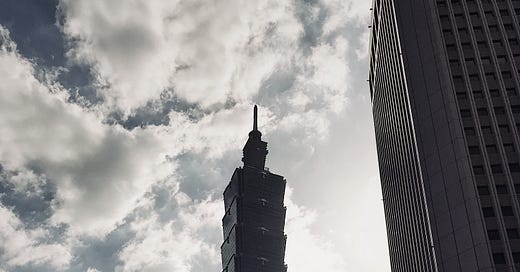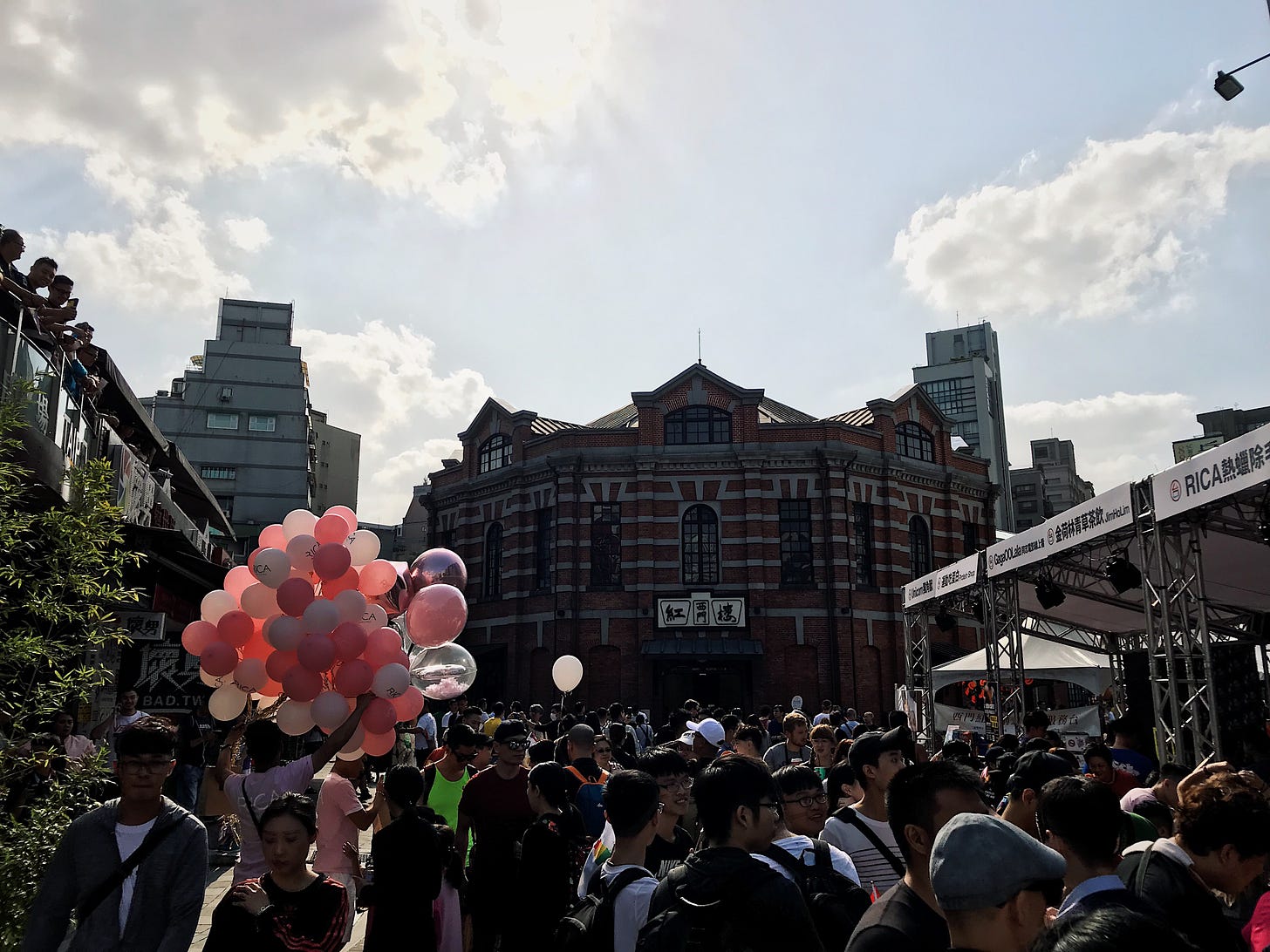Taipei: Part I
My first encounter in Taiwan was at one o’clock in the morning with a man behind a wall of flames and smoke.
He was Taiwanese with a toothless grimace and coarse aspect; his old age left him hunched over though not without dignity. He seemed to be standing more so within the fire than behind it, maneuvering a steel rod adroitly with ungloved hands, overturning the meat that was glistening between he and I. Initially it was the lively congregation of people queuing around this small food stand that drew me in; the fragrant amalgam of smells was likewise magnetizing. There was a tiny and laminated paper sign—no bigger than a post-it note—with handwritten, scribbled characters that I guessed was a description of the food. I couldn't read it, and the language being spoken all around me was equally unintelligible to my foreign ears.
While I had no idea what I was eating, my first bite did not disappoint—meaty, ambiguous, and delicious. It was a fitting welcome to Taipei, the capital of Taiwan famed for its night markets, street foods, and teeming crowds.
Taipei was of course crowded. Just like Hong Kong, there was impossibly dense traffic for wayfarers to manoeuvre on the sidewalks. But even amongst the animated bustle, it felt comparatively mellow. The spirited Taiwanese mass was devoid of the assertiveness and haste and pushiness that I’d grown accustomed to in Hong Kong. People walked slower, smiled more, and offered more right-of-way courtesies. I was confronted with politeness, unhurried and eager conversations, and generous samples from food stands—simple niceties that I’ve missed while living in Hong Kong.
The capital is centered around the Taipei 101 building—named for its one-hundred-and-one floors of sky-scraping magnificence, a staggering floor count that cements it as one of the tallest structures on Earth. From the outside looking up, it is striking. It looms far above the skyline and gives off the impression that it could actually pierce the atmosphere above. The jade hue of the reflecting windows sparkle and glisten with an air of the celestial, as if attempting to defy their corporeality.
Naturally, I went up to the top to fully identify myself as a visiting tourist (as if my backpack, map, and agape expression were not revealing enough). The view was magnificent. From above, the vantage point was that of a bird’s eye view on birds themselves—I saw birds flying below where I stood. Further down rested other impressive skyscrapers which, from the Taipei 101, resembled diminutive toddlers standing under a raised basketball hoop.
Things seem much smaller—physically and otherwise—from a hundred floors up in the sky. People are smaller and problems are smaller when the rest of the world appears so far away. Day to day stressors were, at least for that moment, negligible. When standing at sea-level, things strike in full size, bearing down with the bluntness of what is sometimes a bleak reality: work, exams, relationships, taxes—these constitute pieces of the burden we must all bear as human beings.
Funnily enough, when everything looks as if they could fit into a toy school bus, problems are dampened and what remains is reflection and appreciation. The miles of sprawling miniature skyline I had at my feet made me think of how grateful I am to even be able to write. It is exciting for me to recount tales of distant lands, experiences, and voices to those who wish to listen (as for those who do not, well, it’s even more exciting to try and captivate them).
In Taipei, I learned that if you ask someone from mainland China, commonly enough they will say Taiwan is part of China. If you ask a local in Taiwan, they will proudly proclaim Taiwan is a separate country, distinct and fulfilled through different means than China. Similar yet nonetheless autonomous, overlapping with China’s ancestry and lineage while being uniquely nuanced.
The Chiang Kai-Shek Memorial symbolizes a piece of Taiwan’s shared history with China. The monument commemorates the former President of the Republic of China, who is depicted as grand and imposing and important, seated upon a throne much like Abraham Lincoln in the Lincoln Memorial of Washington DC. At the foot of the statue, there are two armed guards. At the turn of each hour, hundreds of spectators pour in to witness the changing of the guards ceremony (which is also much like the ceremony of the same name at the Tomb of the Unknown Soldier in Arlington, Virginia USA).
The guards marched in slow, purposive steps that revealed the thousands of practiced repetitions behind each subtle movement and synchronization. The five participating soldiers brandished and spun their bayonet-fitted rifles with silence-inspiring precision; the only sound was the sharp clacks of steel-capped boots and the soft rustling of the soldiers’ freshly-pressed coat sleeves.
Looking out from the memorial steps is Liberty Square, where there are three other impressive structures visible: the Liberty Square Main Gate, National Concert Hall, and National Theater. Together, these structures form a serene prelude and subsequent backdrop for witnessing the guard ceremony.
It is here that this week's post closes. Taipei simply had too many sights, people, observations, and beautiful experiences for me to capture within a single, sweeping blog post. Attempting to do so would be detrimental to the quality of writing, and thus to you as my reader. Certain highlights of Taipei would be mentioned too dismissively, unintentionally turned into "low-lights," which would ultimately result in a less authentic, less entertaining, and less readable chapter for you and I both.
Below are some more photos of Taipei, Taiwan:










